The announcement that Alaska Airlines has acquired Hawaiian Airlines this week has abruptly created new dynamics in Hawaii air travel and raised questions about Southwest Airlines’ future in our islands.
Southwest, struggling to gain traction with its Hawaii operations, now faces even greater pressure from a massively strengthened Alaska-Hawaiian competitive alliance. It seems increasingly likely that Southwest may significantly scale back its Hawaii services. Here’s why.
Southwest’s ongoing struggles in Hawaii.
Southwest’s expansion into Hawaii was initially met with excitement by visitors and residents as the airline introduced its signature low-cost fares to interisland routes and direct flights from the mainland. However, over time, the airline’s performance has fallen short of expectations.
Despite cutting 50% of its Hawaii flying and continuous adjustments increasing mainland flight costs, Southwest faces low ridership and mounting financial losses in Hawaii by all accounts. The interisland market, in particular, has proven challenging, where Southwest remains unable to compete with Hawaiian Airlines’ dominant share.
In prior articles, Elliott Management, the airline’s large activist investor, has suggested they may favor Southwest scaling back or even exiting Hawaii if profitability doesn’t improve.
For more context on Southwest’s struggles, see The Southwest Effect in Hawaii: Is it Officially Over?
What does Alaska Airlines’ acquisition of Hawaiian Airlines mean for Southwest?
The purchase of Hawaiian Airlines by Alaska Airlines, effective today, creates a new competitive force that will profoundly impact Southwest’s position in Hawaii. Hawaiian Airlines has long been the preferred choice for interisland flights thanks to its local loyalty, high flight frequency, dedicated fleet methodology, and strong island brand presence. By acquiring Hawaiian, Alaska Airlines gains access to this entrenched market share.
Although Alaska’s primary focus has always been on mainland-to-Hawaii routes, acquiring Hawaiian may encourage the combined entity to refocus on solidifying its interisland dominance. This could push Southwest further out of the picture, making it difficult for them to continue competing in our region. That is also true given their lack of a dedicated interisland fleet and less frequent/convenient flights.
If these aren’t enough, Alaska has more tricks up its sleeve.
Those include bringing the troubling Hawaiian Airlines Philippine-based call center back to being a U.S. operation once again. And we can look forward to a complete technology revamp on both the Hawaiian Airlines website and their mobile apps, none of which have worked correctly since a failed system upgrade that occurred in 2023.
These challenges are discussed further in The Next Shoe to Drop in Hawaii Travel: Southwest.
Southwest’s interisland dilemma.
For Southwest, the interisland market has been particularly tough to crack. Low ridership and poor financial performance have plagued Southwest’s Hawaii operations, and the merger of Alaska and Hawaiian Airlines may be more or less the final blow to any greater interisland ambitions.
Alaska will inherit and possibly expand Hawaiian Airlines’ interisland route dominance, leaving Southwest with even fewer passengers to compete for. Southwest’s cost structure and the complexities of serving these shorter routes make it difficult to achieve profitability, especially when pitted against a combined Alaska-Hawaiian force.
Mainland-Hawaii routes: Will Alaska force a refocus for Southwest here too?
Alaska Airlines already has a strong presence on the West Coast. With Hawaiian’s acquisition, it can bolster its mainland-Hawaii routes in such a way that poses another challenge for Southwest. Alaska could focus resources on enhancing its already robust West Coast-Hawaii network. Without a doubt, this leaves Southwest to contend with a much tougher competitor on all its Hawaii routes.
It won’t take long for Southwest to figure out if this means further reductions in their Hawaii flights or a pivot to focus more exclusively on mainland Hawaii routes is indicated. They appear to have fared considerably better there than in the interisland flight market.
There are other issues that Southwest faces here in Hawaii too, beyond the latest wrinkle. Among them, the long-planned red-eye flights departing the islands have not yet been introduced.
What comes next for Southwest?
- With mounting pressure, accruing financial losses, and investor problems abounding, Southwest will undoubtedly seek to make significant changes to its Hawaii operations.
- Southwest could choose to maintain key mainland routes, but the likelihood of a diminished interisland service appears strong.
- Alternatively, albeit seemingly less likely, Southwest might attempt to fight back with aggressive pricing strategies. However, the financial toll this would take at such a challenging time for “LUV” might prove unsustainable.
- Southwest’s more likely option is to consolidate and reduce its Hawaii routes, focusing on markets where it has achieved better financial performance.
Southwest’s withdrawal from Newark: A parallel to Hawaii?
Southwest’s struggle to gain a solid foothold in Hawaii is at least in some ways similar to its previous attempt to break into another competitive market at Newark Airport (EWR). After nearly a decade of Newark operations, Southwest retreated in 2019, citing multiple issues. Those included financial performance, competition from United Airlines, which dominates that airport, and the grounding of the Boeing 737 MAX fleet. CEO Kelly said at the time, “The financial results at Newark have been below expectations, despite the efforts of our excellent team at Newark.”
Southwest once had up to 20 daily departures from Newark to 10 cities. In Hawaii, too, Southwest entered the market with high hopes, but has faced steep competition, especially in the Hawaiian Airlines-dominated interisland market. That, in particular, has proved a tough nut to crack, with Southwest’s larger planes, low ridership, and mounting financial losses.
While the situation in Hawaii appears driven more by competition and financial struggles than operational challenges, compared with Newark, there are still similarities. Southwest may have to make choices in Hawaii to once again concentrate on markets with proven performance.
The Hawaii challenges ratcheted up significantly this week, making the competitive landscape appear far tougher. Unlike at Newark, where Southwest shifted to a nearby market, LaGuardia, Hawaii flights have geographical and logistical issues that may not offer them similar flexibility.
Conclusions about Southwest Hawaii flights now.
The acquisition of Hawaiian Airlines by Alaska Airlines marks an unprecedented shift in the Hawaii aviation market, and the impact on Southwest Airlines will undoubtedly be profound. While nothing is certain yet, multiple signals indicate the possibility of a sharp contraction in Southwest’s Hawaii flights, especially in the interisland market, where they have struggled to compete.
Hawaii visitors and residents can expect to see significant changes in Hawaii flights, including Southwest’s Hawaii service, in the coming months, as a combined Alaska-Hawaiian entity strengthens its foothold and forces Southwest to face difficult decisions.
We welcome your input!
Get Breaking Hawaii Travel News
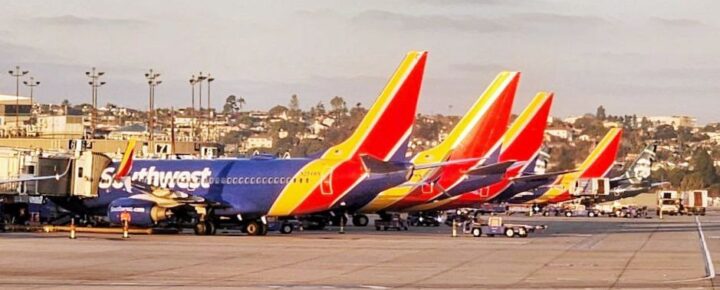
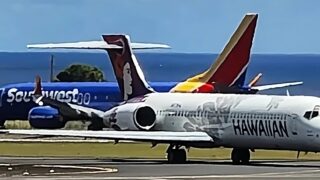

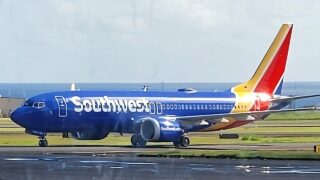
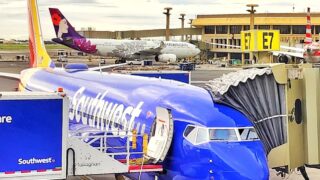

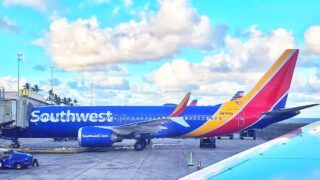
WN has made non stop travel from SMF to Hawaii so much easier for me, 2 bags, no change fees, great legroom, lower prices and companion fares. In the past year I’ve flown seven RTs to Hawaii and every flight is sold out or a few empty seats. Unfortunately WN discontinued non stop flights to Kona. Turns out faster to use another airport like OAK than make stops enroute.
I am a former 17 year Southwest Airlines employee while my wife is a current 22 yr Southwest Airlines employee. Southwest totally missed the boat on purchasing Hawaiian.
Terrible Leadership at Southwest that Elliott Investemt will remove these terrible leaders such as current CEO Bob Jordan, Gary Kelly, and an Army of Southwest Corporate Stooges.
Its southwest dervice or lack of it
That does not make them competitivr.
If this happens with southwest cutting back flights to Hawaii I guess I’ll have to fly United. Will never fly Hawaiian!!!!
We flew Southwest from Reno to Kauai last month
After getting in the plane at the obligatory layover in Las Vegas for an hour, they informed us that they were a little low on fuel so we would be making a “quick stop” in Los Angeles to top off the tank…
Ummm….
Took an hour, and use an appropriate jet for the trip, would you please…
To me the whole southwest experience sucks especially to Hawaii. They don’t give you the option to purchase food. Their snack service is pathetic. They come around to serve drinks just twice. Interisland fights are never on time since your place may be coming from the mainland. They don’t treat Hawaii as a mini hub with dedicated interisland planes. Lack of assigned seating and allowing early boarders to hold seats for others..
SWA is finally paying for the service they provide. Why are their flights not full & their competition is, “Eating their lunch”? It is an indication the public, as a whole, does not care for what SWA provides. The public is voting with their wallet & SWA is coming up short! It is a free market enterprise & the customer is expressing their desire of which airline to fly with. I, cannot be forced to fly SWA nor would I ever care to. I tried them & multiple bad experiences is not worth the savings of low cost! Goodbye forever, SWA! You will not be missed!
Southwest offers best legroom in economy class; most mainland flights to Hawaii; no reservation change penalty fees; free baggage; faster no seat assignment boarding; consistent low to lowest fares; and no red eye flights.
I vote for the above.
Southwest should offer the choice of picking your seat assignment.
Southwest has already announced they are going to assigned seating “in 2025.”
It would be a tragedy if the Alaska-Hawaiian cabal becomes the only major airline flying inter-island. With no competition, prices will spike higher just like it was after Aloha Airlines, Go left and before Southwest entered the market.
From a consumer point of view this is not a good thing. It is too bad the Hawaii Superferry was killed more than 15 years ago.
I hope Southwest stays.
The only risk to multiple airlines flying interisland is if the airports allowed one airline to dominate all the “slots” for an airport. If Southwest did pull out (highly unlikely), there would be another airline (possibly with a uncomfortable, expensive fares to customers, lag) to fill the void. If an airline sees another airline extracting “monopoly rents” (Google basic economics), then another would come in promptly unless there is “friction” (think State of Hawaii bureaucracy). All that being said, I think Southwest would try to adjust their schedules to be more profitable. But I can also see another airline making a “go of it” (whether a ULCC, LCC, or mainline carrier) to compete against Alaska/Hawaiian. One thing I’ve learned watching airlines over 50 years is “Airlines come and go, but the airplanes keep flying.” If there is interisland demand, there will be flights — albeit with possible disruptions.
WN not gonna pull out of Hawaii or completely drop inter island flying. But with the addition of Red Eyes to and from Hawaii WN will probably scale back inter island along with retiming all of the Hawaii flying. I can see the them reintroduce the Covid and Wildfire L48 capacity cuts especially to and from HNL. With Red Eyes WN could even add additional gateway destinations to HNL even if they’re just Friday and Saturday night only service.
Simple.
Interisland routes should plug holes where HA is missing, since most of us commute at different times.
Up key routes like the Bay Area. Add food, up internet. Assign seats.
As another poster panted out, wasn’t one of the reasons that WN entered the Hawaii market was to offer their Rapid Rewards members redemption opportunities due to the lack of any overseas international redemption options?
I have often read that the mainline carriers usually lose money to Hawaii – but need to be in the market for their frequent flyers and direct competition – hence UA’s body-crushing 360+ max capacity 777’s!
Due to the gate use requirements at HNL, WN is kind of in a holding pattern. Once the MAX 7’s come on-line this should help WN’s costs “somewhat” on intra-island flying.
Someone else posted that Elliott has “taken over” WN. This is Not true. WN has a poison pill provision in place – awfully expensive for Elliott to “take over” WN.
What I see here is each airline protecting their turf – WN for intra-California flying and AS at SEA, PDX, ANC/Alaska and now Hawaii.
Alaska would be smart to offer Club 49 to Hawaiian residents (Club 49/50?). 2 free bags when going to/from, 30% off the High-Y fare when flights are full (booked within 72 hours of travel), and a few other neat perks.
Also, Alaska Air gives you *3* free bags for intra-Alaska travel.
So I think Alaska’s got a nice warchest of goodies to compete well against Southwest here. I’m not sure Southwest will pull out completely, but I can see some trimming in the future (eg: 3x day HNL/LIH & ITO, for example; and reduce HNL/OGG/KOA a bit).
One comment I read somewhere suggested that since Southwest’s interisland flights originate or terminate at a terminal serving mainland flights, that the passengers have to send all luggage through agricultural inspections, which is inconvenient for strictly inter-island passengers, so they pay more to fly on Hawaiian.
Additionally, Southwest has to operate a certain number of flights per day out of the airport in Honolulu to keep its gates, and they don’t have enough mainland flights to do so. Hawaii offers a resort location for passengers to use their award points and buddy passes for people flying a lot on their mainland routes.
With Southwest adding red-eye flights, they may be able to leave Hawaii later to connect with late mainland connections that can now be red-eyes, possibly removing the need for inter-island flights.
All of will these feed into Southwest’s decision process, not just what Alaska does.
I think we’re forgetting just how small of an operation Southwest’s interisland flying is. I recall reading on X that interisland Hawaiian flying is 1/3 of 1% of WN’s capacity per last year. If we exclude interisland flying, WN’s system load factor would increase by 1/10 of 1% (0.001). Shutting down Hawaiian interisland flying is not going to make WN profitable, nor is it going to change the tides. For WN, flying interisland allows aircraft to be utilized, builds their presence in the community, and puts pressure on their competition. WN can and does achieve good load factors (>91.5%) between the mainland and the Hawaiian islands. With that being said, I assume WN is aiming for the long game with their Hawaii presence and has other plans. Once red-eyes begin and the MAX 7s are available with one fewer crewmember, 25 fewer seats, and 16-22% better fuel burn (compared to -700s), we’ll likely see a schedule mix-up and/or improved performance.
Excellent context, Jordan.
Southwest is always my last choice from Sacramento. They drove Alaska from Sacramento which was my favourite airline after Aloha Airlines. Since then my only choice was cramped Hawaiian air flights with zero first class upgrades even for platinum members unlike Alaska where I used to get upgraded all the time. I’m hoping that once again i can get upgraded since Alaska is far more generous and you can confirm economy plus upgrades ahead of time unlike Hawaiians very poor FF program.
I felt this way with Alaska when it pulled Hawaii service out of SMF when WN came into the market with Hawaii flights in 2019. The planes on AS were full! AS stopped KOA in 2019 and OGG in 2020 with the onset of COVID including WN delaying those flights. Now with the acquisition, hope the existing HA routes from SMF stay and expand. Including for WN as well but with activist investors at the helm recently, it is going to be unpredictable; just as with their winter meltdown, pulling out of KOA and then bringing it back seasonally for SMF, and other route changes.
Hi Dave. What you described has aircraft and crew availability written all over it. WN has been struggling for sure. Unfortunately, “there’s a new sheriff in town”, the merger…plus HI’s regressive political climate will certainly result in high volatility and impulsive disruptions. If WN remains in the market, it’s going to take at least a couple of years for everything to stabilize.
Hopefully this will not give Alaska carte blanche to raise prices.
Southwest “seems likely that it may” scale back service.
Is this some kind of parody of journalism?
In the past, SW needed at least 10 flights a day to add a mainland station. Their HI business plan probably also included taking share (growth ) and likely has not met expectations. Add in the inability to retire older (less efficient ) aircraft because of Boeing issues compounded by high fuel costs and the take-over by Elliott and something has to give. Thanks to HI’s unbelievably stupid politicians and the merger, SW’s growth prospects in the HI market is now dismal. Look for SW to further reduce HI flying to almost nothing sooner rather than later. If Boeing stays on strike for more than a few weeks, SW will probably accelerate their exit. Their goal is probably to fly each aircraft at least 15-20 hrs per day. HI improves that probability but that’s not enough to save SW’s HI position.
“If Boeing stays on strike for more than a few weeks, SW will probably accelerate their exit.” — Respectfully, that’s not going to drive any SWA decision. Also, Elliott is not “taking over” SWA. That’s not how they work (I know, as I am on an investment committee that has had an Elliott Management investment for the 10+ years I’ve been involved — they are very good at identifying things that need rectifying.)
As a frequent flyer between Denver and Maui, Southwest is the dominant carrier and offers the greatest legroom in economy class. There are many Southwest connecting flights thru West Coast area Airports. Hawaiian Airlines offers no Maui flights servicing Denver. Alaskan Airlines offers connecting flights but the connections are terrible. It would be a significant loss of service if Southwest reduces or abandons service to Maui. I hope that doesn’t happen. I point to service to inland markets as ripe for expansion.
Southwest Airlines L48 Hawaii flights are profitable period.
Hawaii L48 Flights hold the quickest return on investment in WN entire 52 years history. Newark was ridiculously Expensive to operate from and it was part of WN UA agreement to secure the UA lucrative gates at DAL. WN agreed to add EWR to help UA/CO pass the government loophole for the merger. Now As far as inter island flying is concerned WN cost per flight is more than 50% cheaper than Hawaiian airlines. For example WN is essentially Breaking even on the Inter Island flying while Hawaiian is spending losing 2 dollars on every ticket against WN.
Now If anyone thinks AlaskaAir going to continue Allowing Hawaiian to Bleed money on the Inter islands network its first order of business will be stop the bleeding.
Not sure where you got that jetway! HA averages close to a 40 percent higher load factor inter island and gets an average of 30 % higher yield on the tickets they sell….Flying the larger MAX inter island is terrible Aircraft utilization and one of the bigger contributors to SWA’s inter island losses.
An airplane that expensive needs to be kept in the air to make money, not sitting around waiting to fly an inter island flight with half its seats empty and cheaper tickets than the competition. Alaska will have the same advantage and of course is not going to be vulnerable to SWA’s attempts at market share gain.
In fact Alaska inter island will be an even tougher competitor for SWA inter island than HA has been. They will have HA’s local experience and presence as well as bringing their website, call center and some other operational strengths to the market….not to mention much deeper pockets and a more favorable public image than SWA has in Hawaii.
Hawaii residents really need Southwest in Hawaii. If they don’t have it, Hawaiian will go back to charging $150 for an interisland flight. I don’t know why anybody would wish for Southwest to pull out.